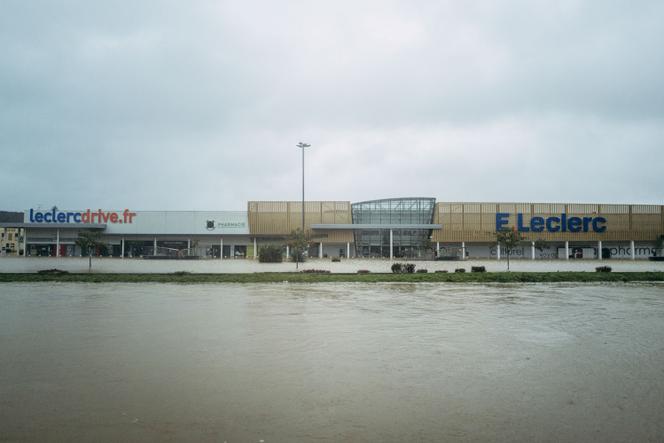


When the residents of the western French village of Saint-Nicolas-de-Redon saw the streams that meander through their local area rise, one after the other, from their banks, they didn't doubt what would happen next: The question was not whether their E.Leclerc hypermarket and shopping center would be flooded, but when. Late in the afternoon on Monday, January 27, the water first began to cover the parking lot, before drowning the service station, followed by the aisles of this supermarket, which has sat between the Vilaine river, the canal and the local marshland for over 40 years. Its 200 employees settled in for months of the store's closure. The protective walls erected around it, which had been raised further after a 2014 flood, were not enough to repel the water.
According to Environmental Transition Ministry figures, 18 million people in France are exposed to flooding from overflowing rivers and streams, making protection against this primary natural hazard a major challenge, at a time when global warming has stepped up the rate of extreme weather events, thereby increasing the frequency of flooding. Should we rely on dams or raise dikes? "All structures have their limits," explained Rémy Tourment, an engineer at the National Research Institute for Agriculture, Food and the Environment (INRAE). In addition to flood protection, it has now become important to "better manage the consequences of flooding, through urban planning." Some local authorities have refused to give in to flooding, which had long seemed to be inevitable, and have set up projects that have proven their worth, often in the wake of major floods.
You have 79.66% of this article left to read. The rest is for subscribers only.
